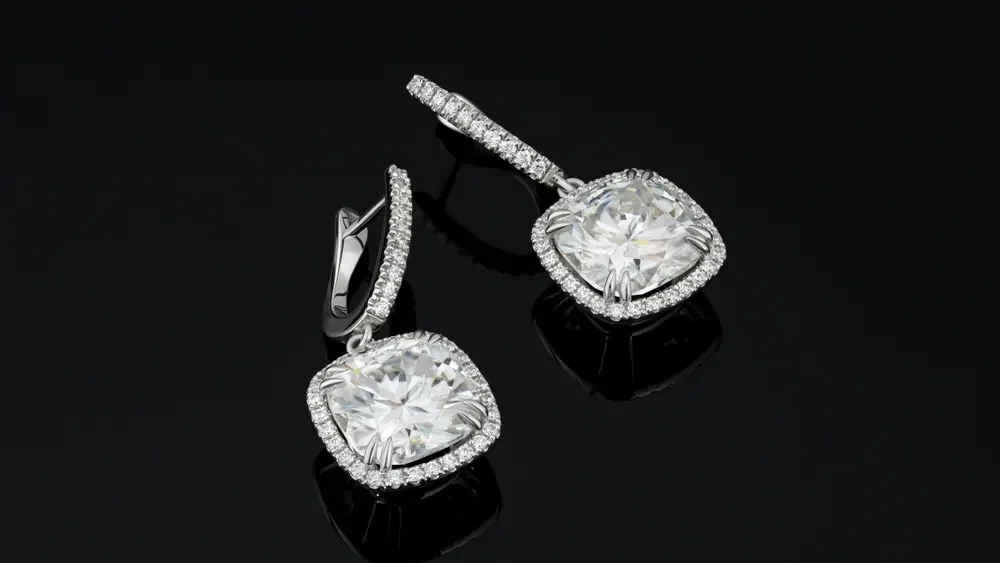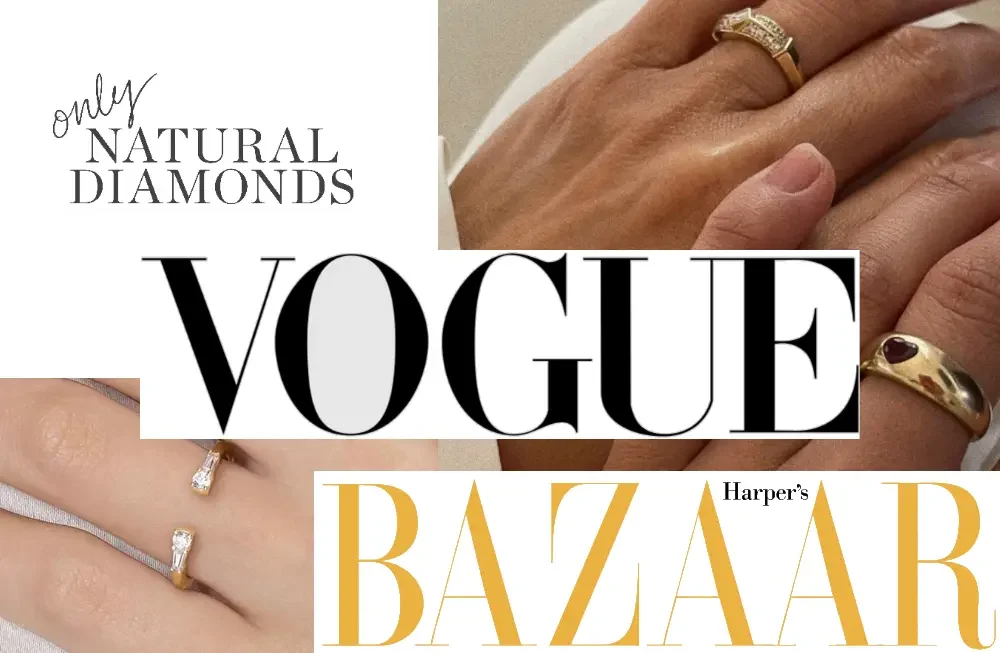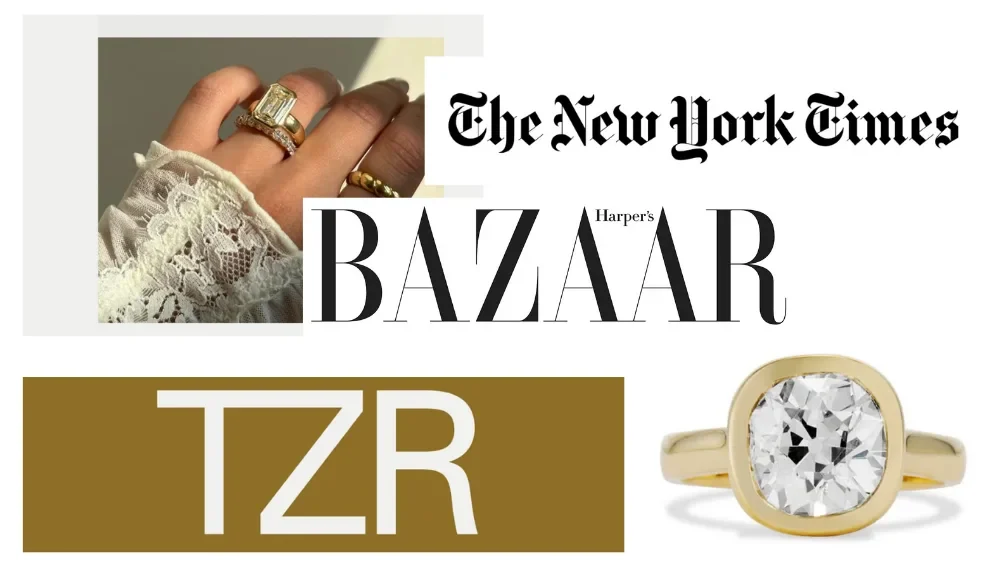How to Design & Create Custom Earrings Online: A Step-by-Step Guide
Custom Jewelry
How to Design the Perfect Pair of Custom Earrings Online: A Step-by-Step Guide
Over the years, we've worked with hundreds of customers looking to create custom earrings, and we've noticed some clear patterns in what makes the process smooth versus what leads to frustration. The good news? Most of the confusion comes from simply not knowing where to start or which options are right for your specific needs. Let's walk through exactly how to approach designing custom earrings online so you can avoid the common pitfalls we see every day.
Getting Started: Understanding Your Options
The custom earring market has exploded in recent years, which is great for consumers but can also feel overwhelming. There are essentially three main approaches people take when creating custom earrings online, and each serves a different purpose.
Some customers prefer working directly with jewelry designers through platforms like Etsy or CustomMade, where they get personalized attention and creative collaboration. Others gravitate toward jewelry websites that offer customization tools—a more streamlined approach with preset options. Then there's the growing trend of 3D design and printing services for those with very specific visions that don't exist anywhere else.
From what we see, most first-timers do best starting with either a designer who can guide them or a user-friendly customization tool. The DIY 3D design route tends to work better for people with either design experience or a lot of patience for learning new software.
Step 1: Clarifying Your Vision
One of the biggest mistakes we see is people jumping into the design process without a clear idea of what they want. They end up making decisions on the fly and often regret them later. The most successful custom earring projects always start with thorough planning.
We recommend customers spend time collecting visual inspiration before making any decisions. Browse Pinterest, Instagram, or jewelry websites and save everything that catches your eye. After collecting 20-30 images, patterns usually emerge—you'll notice you're drawn to certain metals, stone arrangements, or overall styles.
Consider these practical questions:
- What's the primary occasion for these earrings? Daily wear requires different considerations than special event jewelry.
- What's your lifestyle like? Active people need secure closures and durable designs.
- Are you incorporating meaningful elements like birthstones, initials, or cultural symbols?
- What's your budget range? This will significantly influence material choices.
The customers who come to us with mood boards and clear preferences tend to get exactly what they envisioned, while those who haven't done this homework often need multiple revisions.
Step 2: Selecting Materials Wisely
Material selection is where we see the most confusion, particularly among first-time buyers. The choices you make here affect not just the appearance but also the durability, maintenance requirements, and of course, the price.
Metal choices : Sterling silver remains the most popular choice for custom earrings, offering an excellent balance of affordability, beauty, and durability. For those wanting gold, we typically recommend 14k over 18k—it's harder and more resistant to scratches and dents. Gold-filled is an excellent middle ground that offers the appearance of gold with better longevity than gold-plated options. For customers with metal sensitivities, titanium and surgical steel are reliable hypoallergenic alternatives.
Gemstones and embellishments : This is where people often overspend or underestimate their options. Yes, diamonds and precious stones are stunning, but semi-precious options like amethyst, moonstone, citrine, and turquoise offer incredible beauty at more accessible price points. Lab-grown diamonds have become increasingly popular—they're chemically identical to mined diamonds but cost 40-60% less. We're also seeing growing interest in pearls, both traditional and freshwater varieties.
Weight considerations : This is something many people don't think about until it's too late. We've had customers return to us saying their earrings are too heavy to wear comfortably. As a general rule, earrings shouldn't exceed 6-8 grams per piece for all-day comfort. Larger statement pieces can use hollow construction techniques to maintain visual impact while reducing weight.
Step 3: Choosing the Right Platform
The platform you choose should align with your experience level, budget, and how much creative control you want. Here's what we've observed about the different options:
Traditional jewelry customizers (like Blue Nile or Brilliant Earth): These work well for customers wanting classic designs with quality guarantees. The options are somewhat limited to traditional styles, but the craftsmanship and customer service are typically excellent. Best for those prioritizing quality assurance over unique design.
Custom jewelry specialists : Dedicated custom jewelry platforms like The Custom Jeweler bridge the gap between mass customization and fully bespoke design. These services typically offer expert guidance through the entire process, from initial concept to final product. They're particularly helpful for customers who have a vision but need professional input on how to execute it properly.
Marketplace designers : Etsy and similar platforms connect you directly with independent artisans. We've seen incredible work come from these sources, but quality varies significantly. The key is thoroughly reviewing a designer's portfolio and customer feedback before committing. Communication is direct, which some customers love and others find requires too much back-and-forth.
3D printing services : This option has matured significantly in recent years. Services like Shapeways offer printing in various materials including precious metals. However, you'll need either 3D modeling skills or the budget to hire someone who has them. Best for truly unique designs that can't be achieved through traditional methods.
Step 4: The Design Process
How you approach the actual design depends on which route you've chosen, but some principles apply universally.
Working with a professional designer : Clear communication is absolutely critical. The most successful collaborations we've seen involve customers who provide extensive reference materials—multiple photos from different angles, detailed written descriptions, and even rough sketches. Don't assume the designer knows what you mean by "vintage-inspired" or "modern minimalist"—show them specific examples.
Most designers will create renderings or sketches for approval before production begins. This is your opportunity to request adjustments. It's far easier and less expensive to make changes at this stage than after fabrication.
Using online customization tools : These interfaces have become quite sophisticated. They typically guide you through selecting a base style (studs, hoops, drops, chandeliers), then customizing specific elements like metal type, finishes, stone selections, and sizes. The advantage is real-time price updates and immediate visual feedback. The limitation is you're working within predetermined parameters.
Creating your own 3D design : We generally don't recommend this for first-time custom jewelry buyers unless you already have CAD experience. The learning curve is steep, and while programs like Blender are free, jewelry-specific software like MatrixGold or JewelCAD costs thousands of dollars. That said, if you're willing to invest the time, you gain complete creative control.
Step 5: Technical Considerations
This is where professional expertise really matters. We regularly see designs that look beautiful on paper but have structural or practical issues that become apparent during wear.
Size and proportions : Earring size dramatically affects both appearance and comfort. For everyday studs, 4-8mm is the sweet spot for most people. Drop earrings can range from subtle 15mm drops to dramatic 60mm+ statement pieces, but consider how they'll interact with your hair, clothing, and activities.
Closure mechanisms : Push backs are standard and work fine for lighter studs. Screw backs offer extra security but can be cumbersome for daily use. Leverbacks are our top recommendation for drop earrings—they're secure, comfortable, and easy to use. Fish hooks are simple but can work loose during activity. Clip-ons need careful design to avoid discomfort during extended wear.
Structural integrity : This is where many DIY designs fail. Connection points between elements need to be robust enough to withstand repeated wear. Delicate chains can tangle. Asymmetric designs may not hang properly. A good designer considers these factors automatically, but if you're designing independently, you need to think through the mechanics carefully.
Balance and symmetry : Unless intentional asymmetry is part of your design, both earrings must mirror each other exactly. We've seen cases where slight variations in stone size or placement create a mismatched appearance that bothers the wearer.
Step 6: Thorough Review Before Ordering
We cannot overstate the importance of this step. Once production begins, changes become expensive or impossible. Request detailed renderings from multiple angles. If the platform doesn't provide these automatically, ask for them. Verify every specification: metal type and karat, stone types and qualities, dimensions, finishes (polished, brushed, matte), and closure mechanisms.
Research the maker's reputation thoroughly. Look for consistent positive reviews, particularly comments about accuracy to renderings, quality of craftsmanship, and customer service when issues arise. Be wary of makers with limited reviews or those whose past work doesn't demonstrate the level of detail your design requires.
Understand the policies: What's the production timeline? What's the return or exchange policy? What warranty or guarantee is offered? Are revisions included or extra?
Step 7: Placing Your Order
Once you've verified everything, it's time to commit. Make sure you have written confirmation of all specifications and agreed-upon timeline. Custom earring production typically takes 2-8 weeks depending on complexity and the maker's current workload. Rush services are sometimes available for an additional fee, but we generally advise against rushing custom work—quality shouldn't be compromised for speed. Ask about care instructions specific to your materials and design. Different metals and stones require different cleaning methods, and some designs have particular vulnerabilities you should know about.
Step 8: Inspection Upon Arrival
When your custom earrings arrive, inspect them immediately and thoroughly. We recommend doing this before wearing them or removing any tags, as it makes returns or exchanges simpler if needed.
Check that stones are secure in their settings—gently try to wiggle them (they shouldn't move). Examine metal finishes for evenness and quality. Ensure closures function smoothly and securely. Try them on to verify comfort, weight distribution, and that drop earrings hang properly without twisting.
If anything is not as specified or shows quality issues, contact the maker right away with photos. Reputable jewelers will work with you to resolve legitimate concerns.
Professional Recommendations
Based on our extensive experience in the custom jewelry space, here are our strongest recommendations:
Start with simpler designs : Your first custom piece shouldn't be your most ambitious. Start with something straightforward to understand the process and your chosen maker's work quality. You can always go bigger and more complex once you've established a good working relationship.
Budget appropriately : Quality custom earrings in precious metals with genuine stones typically start around $300-500 and can easily exceed several thousand dollars depending on materials and complexity. If a quote seems surprisingly low, question why—you generally get what you pay for in custom jewelry.
Value expertise : Even if you have a strong vision, listen when experienced jewelers offer technical advice. They understand what will be structurally sound, comfortable to wear, and durable over time. We've seen many cases where customers insisted on a specific design approach only to return later asking for modifications because the piece didn't work as expected.
Consider longevity : Trends in jewelry come and go quickly. If you're investing in custom pieces, think about whether you'll still love the design in five or ten years. Classic elements combined with personal touches tend to have the best staying power.
Document everything : Keep all communications, specifications, and renderings. This protects both you and the maker if there are any disputes about what was agreed upon.
Conclusion
The custom earring market offers more options than ever before, which is both exciting and potentially overwhelming. The key to success is approaching the process methodically: clarify your vision, choose materials wisely, select the right platform for your needs, communicate clearly throughout the design phase, and verify everything before production begins.
We've seen countless customers create beautiful, meaningful pieces that they treasure for years. We've also seen what happens when people skip steps or make decisions too quickly—disappointment, wasted money, and frustration. The difference usually comes down to preparation and choosing the right partners for your project.
Whether you're creating earrings for yourself, as a gift, or even as the start of a jewelry business, taking the time to do it right pays off. Custom jewelry should be a rewarding experience that results in pieces you're proud to wear or give. With the right approach, that's exactly what you'll get.
✨ Ready to bring your dream earrings to life? Get started today and let us craft a pair made just for you. 💎



